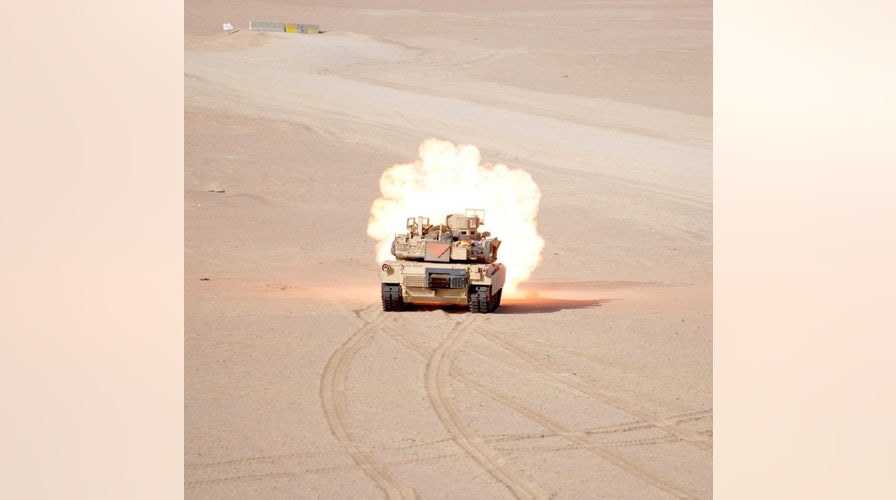Fox News Flash top headlines for October 29
Fox News Flash top headlines are here. Check out what's clicking on Foxnews.com.
The Army has been upgrading and augmenting the attack system for its Abrams tank to ensure a clearer view for gunners looking to find, engage and destroy targets.
The effort involves upgrading and modifying Kongsberg’s Common Remotely Operated Weapons Station, a combat-tested technology that lets soldiers control and fire a vehicle weapon from beneath the protection of armor by virtue of looking at a video screen and leveraging advanced fire-control technology.
Kongsberg took 300 systems and manufactured the smaller, lower profile systems the Army wanted to change as a way to help modify the weapons system for more efficient use. Low Profile Crew Remotely Operated Weapons Station (CROWS) remain in production for the Abrams and various U.S. allied systems. Kongsberg is the sole provider for Remote Weapons Systems throughout the Defense Department and, company developers say, has worked to sustain combat-tested systems and also adapt to a new, fast-changing threat environment through innovations.
“Low Profile CROWS is a shorter version of CROWS. It is built with a 10-inch reduction to build a shorter system because requirements from the Abrams community included not having any field of view obstruction,” Scott Burk, vice president, Kongsberg Defense, told The National Interest in an interview.
'ATTACKING AT SPEED': ARMY PROJECT CONVERGENCE AND BREAKTHROUGH LIGHTNING-FAST WAR
CROWS continues to be upgraded with new fire-control technology, AI and higher-fidelity long-range sensors.

An M1A2 Abrams tanks assigned to 1st Battalion, 66th Armor Regiment, 3rd Armored Brigade Combat Team, 4th Infantry Division, fires a 120mm Sabot tank round at a target during Gunnery Live Fire Qualifications at the Udairi Range Complex, Kuwait, April 26, 2015 - file photo. (U.S. Army photo by Capt. Shaun Manley, 3rd ABCT, 4th Inf. Div., Public Affairs Officer)
The systems not only arm the Abrams tank but are essentially integrated across multiple fleets in the Army, including Joint Light Tactical Vehicles, Strykers and even Humvees. Attacking or tracking targets while under armor is, it goes without saying, a huge priority for land war tacticians because it lets soldiers operate while less vulnerable to enemy fire.
Improvements to range and resolution of targeting sensors – and added integration with vehicle-mounted radar and EW [Electronic Warfare] antennas – can greatly optimize under-armor attack possibilities, enabling various kinds of otherwise impossible armored attack maneuvers.
Newer CROWS are increasingly engineered for what Burk called “commonality” across the fleet, meaning they are designed with a technical infrastructure that allows them to accommodate new weapons and threat-specific software upgrades as needed.
SOLDIERS USE AI TO FIRE PRECISION GRENADES, GUIDE DRONE ATTACKS
Burk called the upgrade effort a “tech refresh,” explaining that the upgrades bring new, previously unavailable attack technology to tactical warfare.
“We’ve always had the ability to do 'slew to cue,' taking data from one sensor, and now we are able to do that with many sensors at one time,” Burk said.
CLICK HERE TO GET THE FOX NEWS APP
This new modification introduces some interesting tactical possibilities and lends itself to higher-speed, AI-enabled information processing of otherwise disparate pools of combat-critical sensor data. Perhaps one sensor sees enemy armored vehicles at relevant ranges closing in to contact, while yet another system discerns air targets or terrain obstacles. A single, integrated system can massively expedite sensor-to-shooter time and help contribute to the Army’s sought-after “kill web” intended to connect any sensor to any shooter in real time.
-- Kris Osborn is the Managing Editor of Warrior Maven and The Defense Editor of The National Interest --





















